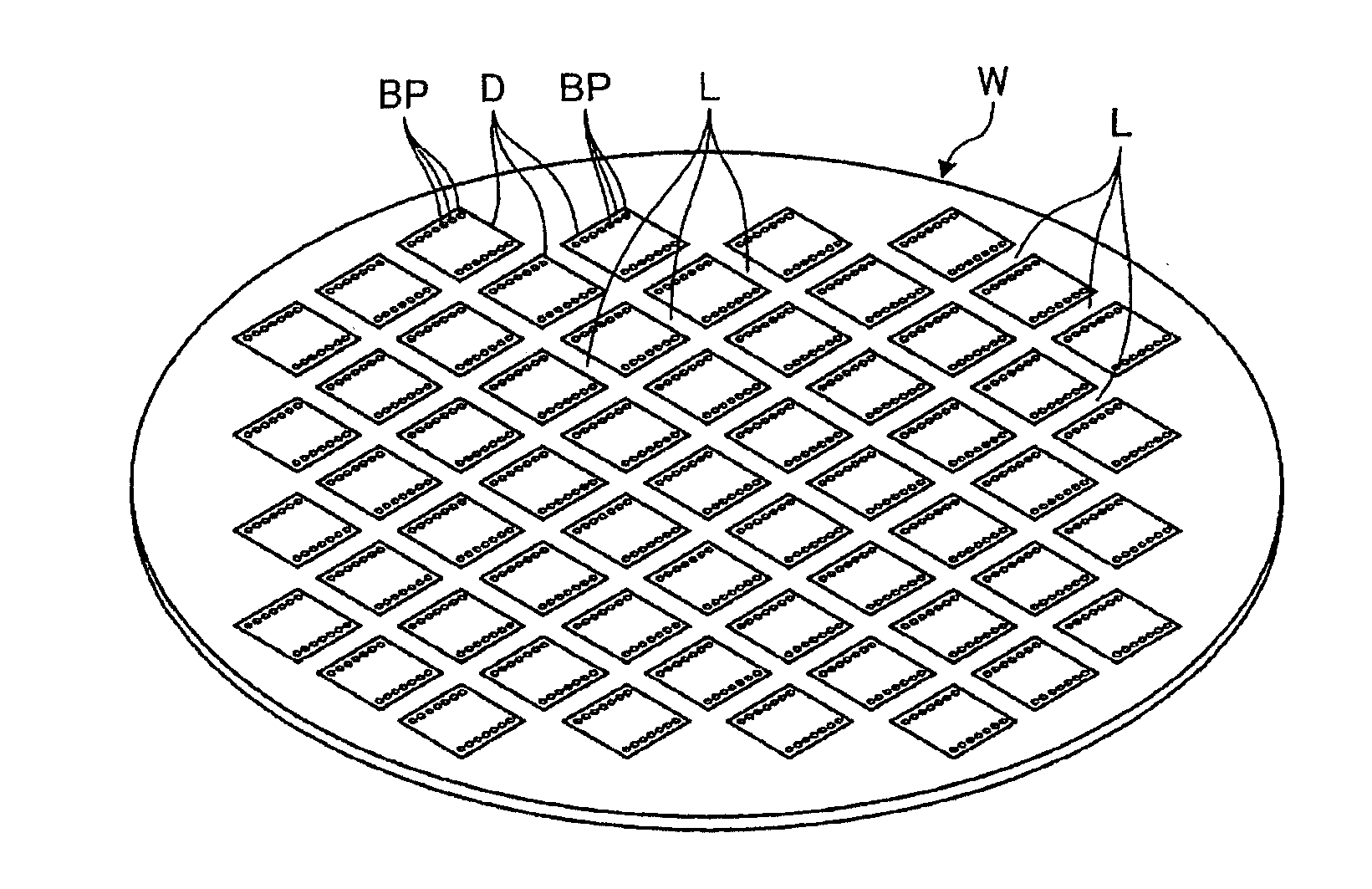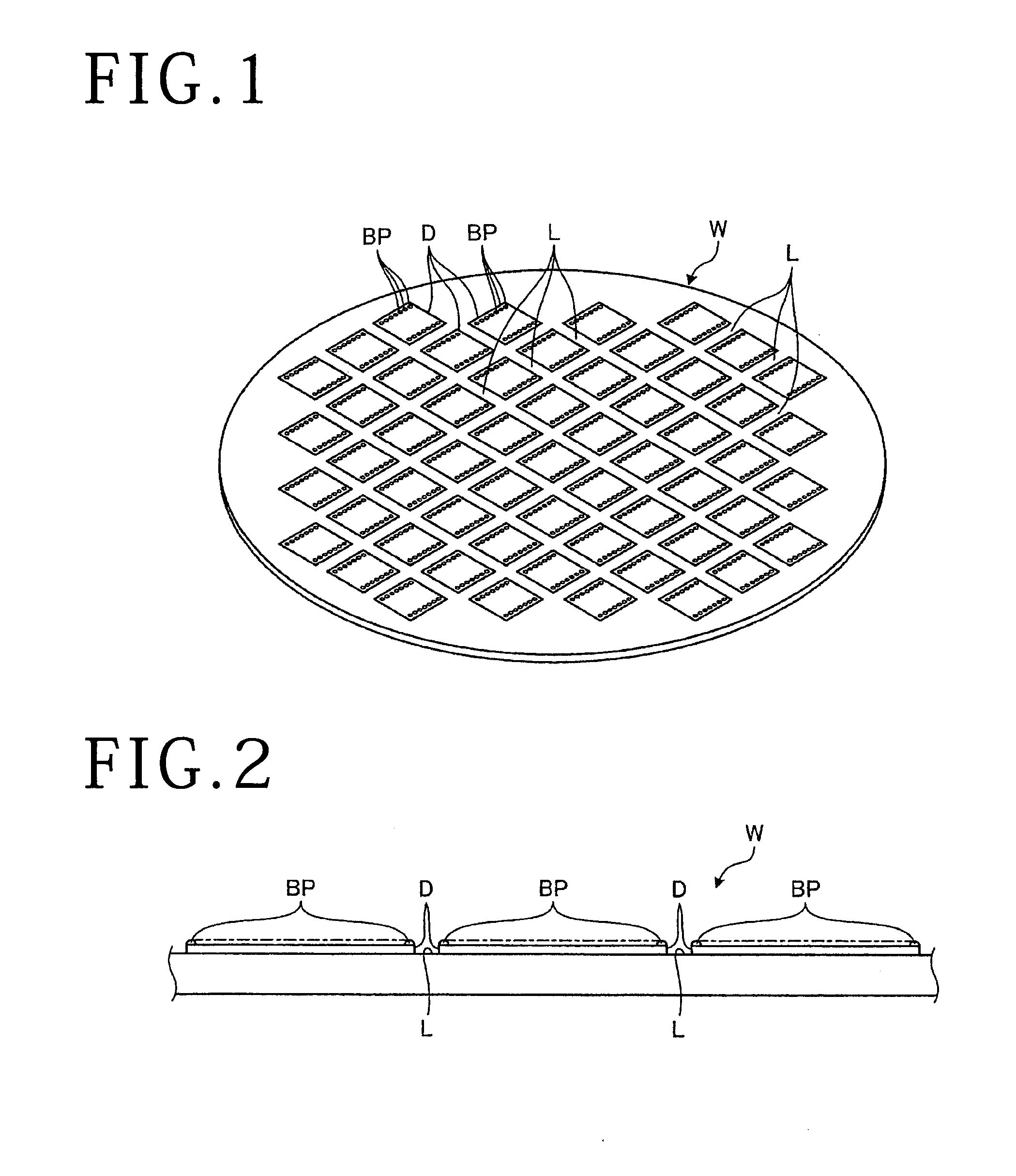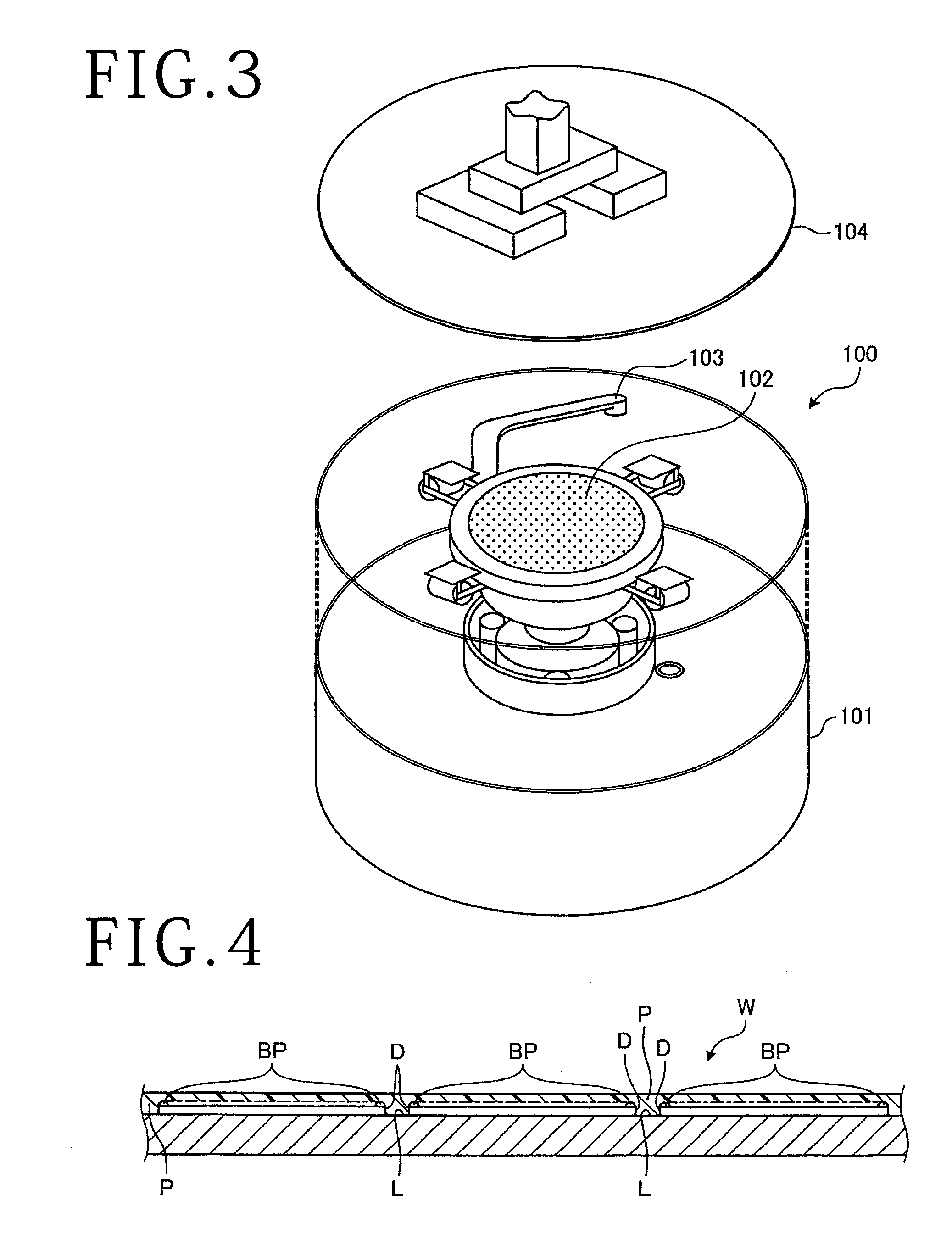Protective film detecting method
- Summary
- Abstract
- Description
- Claims
- Application Information
AI Technical Summary
Benefits of technology
Problems solved by technology
Method used
Image
Examples
first embodiment
[0031]A protective film detecting method according to a first embodiment is a method of detecting whether or not a workpiece W, of which an example is shown in FIGS. 1 and 2, is coated with a water-soluble protective film P (shown in FIG. 4). In the first embodiment, the workpiece W is a disk-shaped semiconductor wafer or optical device wafer in which silicon, sapphire, gallium or the like is used as a base material. In the workpiece W, as shown in FIGS. 1 and 2, a plurality of devices D formed on the surface of the workpiece W are partitioned in a grid pattern by a plurality of streets L. Each of the devices D of the workpiece W is formed with a plurality of bumps BP (also called electrodes) projecting from the surface thereof. In other words, the workpiece W is formed with the plurality of bumps BP on the surface thereof. After the surface of the workpiece W is coated with the water-soluble protective film P, the workpiece W is subjected to ablation by applying a laser beam to the...
second embodiment
[0058]A protective film detecting method according to a second embodiment of the present invention will be described, on the basis of the drawing. FIG. 8 is a diagram showing an example of a configuration of a detection device for use in the protective film detecting method according to the second embodiment. Note that in FIG. 8, the same parts as those in the first embodiment are denoted by the same reference symbols as used above, and descriptions of the same parts will be omitted.
[0059]A detection device 10-2 for use in the protective film detecting method according to the second embodiment includes an infrared light irradiation section 30 and an infrared light receiving section 40 in which optical parts 32 and 42 are so configured that the direction of infrared light IR cannot be varied. Driving means 50-2 of the detection device 10-2 includes a rotational driving part 51, and an arcuate driving part 52-2 that moves the infrared light irradiation section 30 and the infrared ligh...
third embodiment
[0061]A protective film detecting method according to a third embodiment of the present invention will be described below, on the basis of the drawings. FIG. 9 is a diagram showing an example of a configuration of a detection device for use in the protective film detecting method according to the third embodiment. FIG. 10 is a sectional view taken along line X-X of FIG. 9. Note that in FIGS. 9 and 10, the same parts as those in the first embodiment are denoted by the same reference symbols as used above, and descriptions of the same parts will be omitted.
[0062]A detection device 10-3 for used in the protective film detecting method according to the third embodiment includes an infrared light irradiation section 30 and an infrared light receiving section 40 wherein infrared light IR is radiated and a reflected light IRout of the infrared light IR is received through a single optical fiber cable 70, as shown in FIG. 9. In the third embodiment, the optical fiber cable 70 includes: a pl...
PUM
 Login to View More
Login to View More Abstract
Description
Claims
Application Information
 Login to View More
Login to View More - R&D Engineer
- R&D Manager
- IP Professional
- Industry Leading Data Capabilities
- Powerful AI technology
- Patent DNA Extraction
Browse by: Latest US Patents, China's latest patents, Technical Efficacy Thesaurus, Application Domain, Technology Topic, Popular Technical Reports.
© 2024 PatSnap. All rights reserved.Legal|Privacy policy|Modern Slavery Act Transparency Statement|Sitemap|About US| Contact US: help@patsnap.com










